EARTH To BOTTLE
The winery is a living thing from the earth where the vines emerge to the guests who visit us. We like to share some behind the scenes info and thoughts that influence our winemaking from the earth to the bottle.
It's Spring in the Vineyards...almost
"Patience is bitter, but its fruit is sweet."
-Jean Jacques Rousseau
The end of March typically correllates to bud break in our vineyards. Vines, awaking from dormancy, shoot forth new growth, thus signifying the beginning of another season. However, if your Weather Underground phone appp gets as much use as mine then you're already aware of the incredible amount of rain that Pope Valley has receive since the water year started in October. Due to the inordinate number of cool, overcast days, our vines have decided that winter will last just a little longer on our property. 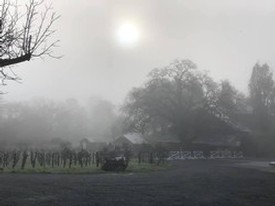 As March turns into April, there is still no sign of bud-break; while that's not detrimental to overall quality, it just means that I won't be making any Thanksgiving plans just yet. So, alas, I don't have any pictures of springtime to share with you, I do have something better---wine! And isn't that better?
As March turns into April, there is still no sign of bud-break; while that's not detrimental to overall quality, it just means that I won't be making any Thanksgiving plans just yet. So, alas, I don't have any pictures of springtime to share with you, I do have something better---wine! And isn't that better?
The (eventual) coming of spring brings you our very first estate Sauvignon Blanc! In 2018, our four-acre, faultline-adjacent parcel yielded a small, mineral-driven crop (for more information on the site, someone -me- wrote a great blog post prior to this one). Generous acid gives this wine enough verve and tension to carry you into the warmer months.
Some recent time in Italy has my wife and i considering the key elements that drive really delicious Sangiovese, and I'm proud that our 2016 offering is unlike any red wine currently being made in Napa Valley. Our volcanic soil with bands of slate are just what Sangiovese needs to express itself fully, and we are inspired to see just where the program can go in the coming years.
Finally, Petit Verdot is a varietal that has gained some attention around here, and our 2015 bottling is a shining example of what we feel the grape can deliver in terms of concentration and elegance. Conventionally utilized as a blender-grape to add some backbone to softer Bordeaux, Pope Valley Petit Verot has earned a place on its own. Enjoy your wine club selections that are coming to you soon. Cheers!
Our Fault Line and Sauvignon Blanc
"All I'm saying is that minerals are just a rudimentary form of consciousness whereas the other people are saying that consciousness is a complicated form of minerals."
-Alan Watts
There's a wine shop not far from where I live, and I frequent it often. Back in December, they hosted a tasting of some of my favorite Sauvignon Blancs in the world-Dagueneau- and it's difficult not to taste what may very well be close to perfection (albeit, through my lens) while considering our humble new wine in the context of worldwide offerings.While we lack the ancient limestone soils of the Loire, what we do have is a fault line that runs adjacent to our Sauvignon Blanc plantings. Could it be the future site of the Big One? Who knows, but the eons of non-existential seismic acitivity have kicked up some really interesting mineral bands and have created incredibly unique profiles containing iron and flint. Sauvignon Blanc is new on our estate, and the goal when creating this wine was to have all these quirky, previously unseen bits of earth come through in the glass.
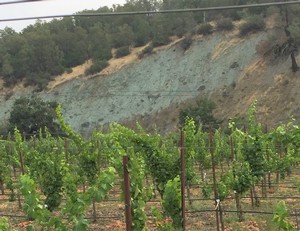
The elements of flint are omnipresent on the nose-chalky marl that doesn't typically appear in our estate soils lends a stony reductive quality to the wine's aroma. Lower crop yields (3 tons/acre) help retain flavor concentration but these aren't your standard gooseberry/boxtree notes. Our Sauvignon Blanc conjures more savory aromas: gunmetal, quartz, and tarragon to name a few. Serve this one a little on the warmer side to get full expressions. The aforementioned fault line is the real star of the show here, and our 4-acre parcel sits quietly in its shadow.
Cabernet Sauvignon and Elasticity
"Live in each season as it passes; breathe the air, drink the drink, taste the fruit, and resign yourself to the influence of the Earth." -Henry David ThoreauIf there’s one character trait to be understood regarding Cabernet Sauvignon, it is elasticity. Though the word choice may strike you as odd, considering the volumes that have been written lauding the grape’s structure, depth, intensity, etc, an oft-overlooked feature of Cabernet is its ability to be stretched to viticultural limits while producing wines of distinction. I’ve had the opportunity to make it in what some might refer to as “less-than-ideal grapegrowing conditions: picking around hurricanes, burying vines to protect them from snow, and even training two trunks per vine as a means of hedging bets against dangerous cold. But despite nature’s best efforts, Cabernet can grow, and thrive. So what makes Pope Valley so special? What is it that separates Cabernet grown here from wines of my past? A substantial aspect of that answer is the fact that we don’t have to take any of those extreme measures.
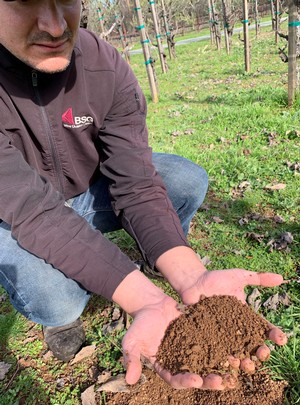 There isn’t a tremendous amount of intervention with our vines; they’ve reached an age where they have outgrown the voracity of their formative years and have begun to self-regulate. Our fine volcanic loam is incredibly well-drained, meaning that our root systems need to be extensive in order to supply vines with enough water to last the season. Fruit yields are modest (see: humble), skins are thick (thank you, cold nights), and berry sizes are small—essentially, our site possesses the remarkable capacity to do exactly what we desire it todo. Seemingly, Cabernet was meant to be in this soil, and the wines reflect as such.
There isn’t a tremendous amount of intervention with our vines; they’ve reached an age where they have outgrown the voracity of their formative years and have begun to self-regulate. Our fine volcanic loam is incredibly well-drained, meaning that our root systems need to be extensive in order to supply vines with enough water to last the season. Fruit yields are modest (see: humble), skins are thick (thank you, cold nights), and berry sizes are small—essentially, our site possesses the remarkable capacity to do exactly what we desire it todo. Seemingly, Cabernet was meant to be in this soil, and the wines reflect as such.
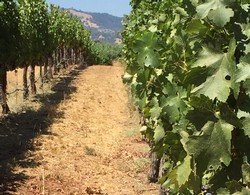
Those familiar with 2015 understand that the vintage is noted for its concentrated wines. The North Coast was in year three of an extreme drought, and most water tables were near-dry. Though the summer was moderate, considerable heat came in September and berry-ripening was coupled with dehydration. Berries that were already small by nature (and by lack of available ground resources) became smaller. Stunning, really—I’d never seen a season like that. Yields were lower, consequently, and we made less wine; however, that which we did was truly special.
A long-winded buildup to describe our 2015 Cabernet Sauvignon, no? Well, if you’re still reading, you’ve been patient—and it’s much-appreciated. Anyway, those small berries worked in our favor. Less juice and more skins resulted in (you guessed it) concentrated flavors with a density that I don’t believe has been achieved on this property prior. Intriguing touches of Cabernet’s trademark herbalness exist on the nose, as if scattered by a deft hand. Dried bay leaves, coriander, and English plum give way to savor aromatic undertones of light-roasted Central American coffee toasted pignoli nuts. Focused acidity keeps everything in line on the palette, and the wine demonstrates remarkable length and tension in a season when many wines developed in the opposite direction. The tannins are fine-grained, and I’d recommend a quick decant if you’re looking to enjoy it early. However, for those who believe that patience and faith will be rewarded, I’d sit on my hands for at least another year.
Cheers!
Garrett
The Oak Tree
“Maybe that’s enlightenment enough: to know that there is no final resting place of the mind; no moment of smug clarity. Perhaps wisdom […] is realizing is realizing how small I am and unwise, and how far I have yet to go.”
-Anthony Bourdain
My small office window overlooks our winery’s iconic oak tree—a calm, steady presence outside our door throughout all that is the vintage. It has seen generations of winemakers come before myself, and, though I hesitate to speak of my own mortality so late in October, it will surely see generations after me. 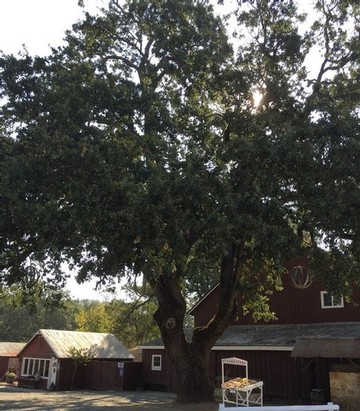 Its steadfastness in the wake of growth, expansion, and human intervention is a daily reminder that on a long enough timeline, all things return to the land from which they came. Those who work in agriculture are particularly astute to the fact that these pieces of earth, which we so carefully tend, are only able to give as well as they receive. So as a humble fermentor of grapes, what does that mean for me? Well, I suppose the relationship should go far beyond picking grapes and making wine. The penultimate goal of anyone who feels the need to make their living by cultivating the ground is to form a symbiotic relationship with it—to understand it on a level typically reserved for close friends and family. It is a living thing and should be treated as such. Only when we properly understand our terrain can we adequately meet its needs, and hence, only then are we able to taste the reflective “sense of place” in the fruit it yields to us. And I consider myself, new to this place, a student of this land, prepared for the slow lessons it will provide over the course of seasons in hopes to someday capture all of this place’s elements—soil, topography, heat, rain, wind, history, and (with discretion) human hands—to bring the flavors unique to only our location. Winemaking, however, is an exercise of perpetual humility—where incremental progress and learning quickly cedes to the realization that nature, and in this instance—microbiology, will always win.
Its steadfastness in the wake of growth, expansion, and human intervention is a daily reminder that on a long enough timeline, all things return to the land from which they came. Those who work in agriculture are particularly astute to the fact that these pieces of earth, which we so carefully tend, are only able to give as well as they receive. So as a humble fermentor of grapes, what does that mean for me? Well, I suppose the relationship should go far beyond picking grapes and making wine. The penultimate goal of anyone who feels the need to make their living by cultivating the ground is to form a symbiotic relationship with it—to understand it on a level typically reserved for close friends and family. It is a living thing and should be treated as such. Only when we properly understand our terrain can we adequately meet its needs, and hence, only then are we able to taste the reflective “sense of place” in the fruit it yields to us. And I consider myself, new to this place, a student of this land, prepared for the slow lessons it will provide over the course of seasons in hopes to someday capture all of this place’s elements—soil, topography, heat, rain, wind, history, and (with discretion) human hands—to bring the flavors unique to only our location. Winemaking, however, is an exercise of perpetual humility—where incremental progress and learning quickly cedes to the realization that nature, and in this instance—microbiology, will always win.
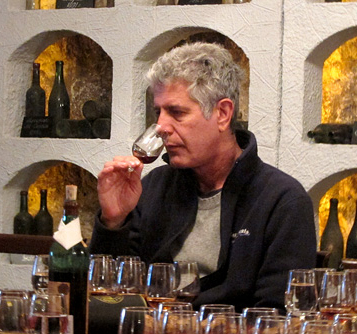 As you may have already surmised, there is a great deal of Bourdain in my house. My wife and I are currently in the middle of the final episodes of “Parts Unknown,” and we’re enamored with the globetrotting exploits of man who is seemingly at ease in situations that would make most non-celebrity human beings, such as myself, particularly uncomfortable. Sparing the details, the best explanation for his behavior that I can suggest would be that Bourdain was incredibly cognizant of what he did not know. Choosing to draw from that mental space, rather than attempting to apply his own experiences to different cultures, allowed him to maintain a genuine sense of interest and curiosity throughout his travels. Allowing himself to be truly open to receiving knowledge meant eliminating all preconceived notions and evaluating subjects at face-value. Ah, and then there is myself—working a new vintage in a new place, with new land and new people and new grapes. Not exactly Chef Bourdain’s Arabian desert or Antarctic wasteland, but a “part unknown” nonetheless.
As you may have already surmised, there is a great deal of Bourdain in my house. My wife and I are currently in the middle of the final episodes of “Parts Unknown,” and we’re enamored with the globetrotting exploits of man who is seemingly at ease in situations that would make most non-celebrity human beings, such as myself, particularly uncomfortable. Sparing the details, the best explanation for his behavior that I can suggest would be that Bourdain was incredibly cognizant of what he did not know. Choosing to draw from that mental space, rather than attempting to apply his own experiences to different cultures, allowed him to maintain a genuine sense of interest and curiosity throughout his travels. Allowing himself to be truly open to receiving knowledge meant eliminating all preconceived notions and evaluating subjects at face-value. Ah, and then there is myself—working a new vintage in a new place, with new land and new people and new grapes. Not exactly Chef Bourdain’s Arabian desert or Antarctic wasteland, but a “part unknown” nonetheless.
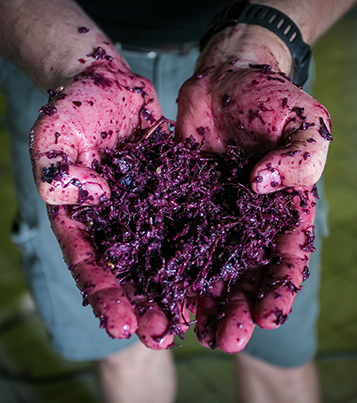 Our 2018 growing season was about as moderate and as steady as I’ve ever experienced. Granted, we had periods over the summer when temperatures exceeded 100 degrees, but those occurred during periods that were non-detrimental to fruit quality. Beginning in August, as we prepared for what was sure to be a continuation of the modern-trend (heat spikes and fast-and furious picking), something remarkable happened—that time never came. Rather, Pope Valley experienced daily highs in the mid-80s with cool nights, which were ideal for steady flavor development and acid retention in the fruit. The East Coast pessimist in me, patiently waited for the late-summer heat to come, and while we flirted with it for a day or two, in all we were permitted to harvest essentially at our leisure. We began with Sangiovese on September 10 (destined for our rose), which was harvested a full three weeks later than in 2017. Pope Valley Sauvignon Blanc, a new and exciting venture for us, was picked about a week afterward. Under no environmental pressure to pick, red trickled in at the end of the month and now, at the end of October, we’re prepared to bring in the last of our Cabernet on Halloween. Spirits and quality have remained high, and even some rain and provider-inflicted power-outages couldn’t get in the way of what is becoming, truthfully, a special vintage. Is such a moderate season an outlier in a string of hotter and hotter years, or is 2018 a regression back towards “normal”? And still, what is “normal” anymore (though that may be a topic for a different post altogether)?
Our 2018 growing season was about as moderate and as steady as I’ve ever experienced. Granted, we had periods over the summer when temperatures exceeded 100 degrees, but those occurred during periods that were non-detrimental to fruit quality. Beginning in August, as we prepared for what was sure to be a continuation of the modern-trend (heat spikes and fast-and furious picking), something remarkable happened—that time never came. Rather, Pope Valley experienced daily highs in the mid-80s with cool nights, which were ideal for steady flavor development and acid retention in the fruit. The East Coast pessimist in me, patiently waited for the late-summer heat to come, and while we flirted with it for a day or two, in all we were permitted to harvest essentially at our leisure. We began with Sangiovese on September 10 (destined for our rose), which was harvested a full three weeks later than in 2017. Pope Valley Sauvignon Blanc, a new and exciting venture for us, was picked about a week afterward. Under no environmental pressure to pick, red trickled in at the end of the month and now, at the end of October, we’re prepared to bring in the last of our Cabernet on Halloween. Spirits and quality have remained high, and even some rain and provider-inflicted power-outages couldn’t get in the way of what is becoming, truthfully, a special vintage. Is such a moderate season an outlier in a string of hotter and hotter years, or is 2018 a regression back towards “normal”? And still, what is “normal” anymore (though that may be a topic for a different post altogether)?
And what bits of knowledge have we gained? Well, soils do some strange things when they lie directly on top of fault lines (no earthquakes here, but the range of minerals taken up by these vines is remarkable). High-elevation tannins can be an enemy, but they can also be your friend. Water is of particular value; and, as with most agricultural ventures, non-action is sometimes the best course of action. With such lessons learned, we can begin to prepare ourselves for 2019; in the entropic nature of autumn, grapes become wine, and the last remaining acorns fall from our tree.
